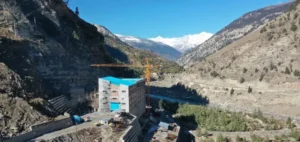India recently announced a massive $1 billion investment to accelerate the construction of 12 hydropower plants in the state of Arunachal Pradesh, located in the north-eastern Himalayan range. This ambitious project, approved by the Ministry of Finance under the leadership of Nirmala Sitharaman, is designed to strengthen the region’s energy infrastructure and support local economic development. However, this initiative risks exacerbating tensions with China, which claims the region as part of its territory.
Geopolitical context and energy issues
Arunachal Pradesh, a strategic region for India, is at the heart of territorial claims with China, which considers it part of southern Tibet. New Delhi’s decision to invest in hydroelectric infrastructure is part of a broader strategy to develop energy capacity and strengthen India’s presence in this disputed area. The hydropower projects, with a total capacity of 11.5 gigawatts, will be financed in part by federal subsidies of up to 7.5 billion rupees per project.
Local Impact and Regulatory Challenges
The government’s support program provides around 90 billion rupees for these projects, facilitating the participation of northeastern states in these initiatives. The commitment of local governments is crucial in obtaining the necessary regulatory authorizations, managing the rehabilitation of affected populations and negotiating the sharing of the electricity generated. This collaboration could speed up the implementation process, which is crucial to meeting India’s growing energy needs.
International reactions and future implications
This approach is causing concern internationally, particularly in China. The Chinese authorities have already expressed their opposition to other Indian infrastructure projects in the region. China’s construction of dams on the section of the Brahmaputra known in China as the Yarlung Tsangpo has also alarmed India, which fears flash floods or water shortages downstream. The two countries, which have a history of border disputes, are currently working to improve their infrastructure along the 2,500 km long, largely undemarcated common border.
Recent developments and outlook
Contracts for the construction of hydroelectric power plants were awarded to Indian state-owned companies such as NHPC Ltd, North Eastern Electric Power Corporation Ltd (NEEPCO) and SJVN Ltd. These companies were chosen after a number of private initiatives failed to produce results. In 2020, clashes in the western Himalayas resulted in the deaths of 20 Indian and at least four Chinese soldiers, underlining the fragility of bilateral relations.
Having built less than 15 gigawatts of hydroelectric capacity over the past 20 years, India is now turning to these projects to diversify its energy mix, which is largely dominated by coal and renewable energy sources. The implementation of these projects could therefore play a key role in India’s energy strategy, while marking a significant step forward in the management of regional tensions with China.
Recent meetings between India’s Foreign Minister, Subrahmanyam Jaishankar, and his Chinese counterpart, Wang Yi, showed a willingness to engage in dialogue to resolve border disputes. However, the future of these hydroelectric projects remains uncertain and will depend on the evolution of Sino-Indian relations.
In conclusion, the Indian initiative to build hydroelectric power stations in Arunachal Pradesh is a strategic gamble for both energy and geopolitics. As India moves ahead with these projects, the interplay between energy development and regional dynamics will continue to shape the balance of power in Asia.





















